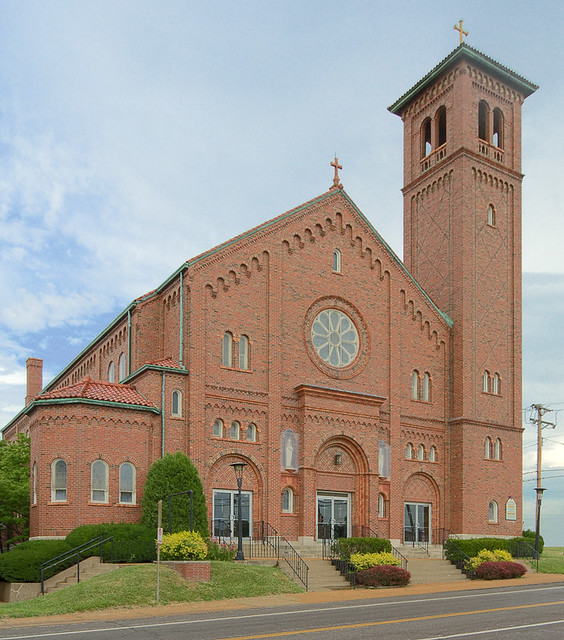
From the Parish's history:
Following the World's Fair in St. Louis there was a rapid growth in the St. Louis area. This was reflected in many new Catholic parishes established at that time. One was St. Andrew. Archbishop John Glennon appointed Father Albert Mayer to be the first Pastor of a parish between the River Des Peres and Jefferson Barracks on December 24, 1904. Neighboring parishes were St. Boniface and Our Lady of the Assumption. The first Mass for the people was said February 5, 1905. There were 200 families at that time. Theodore Roosevelt was the President, and there were two Governors of Missouri that year, Alexander Dockery and Joseph Folk. The Pope was Pius X, the last Pope so far to be given the title of Saint.This church dates from 1930.
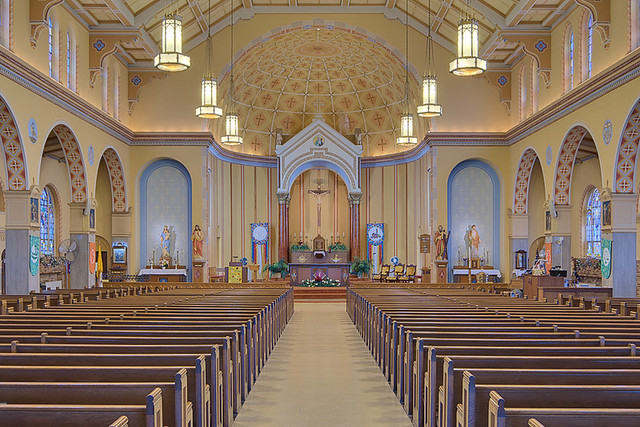
Deus in loco sancto suo: Deus qui inhabitare fecit unanimes in domoThis is a beautiful church; I ought to have visited years ago, considering how close I live to it. Many thanks to the parish staff and Deacon who let me take pictures here.
God in His holy place; God who maketh men of one mind to dwell in a house
According to the 2010 Archdiocesan Status Animarum, or ecclesiastical census, this parish has approximately 800 Catholics. Much of the low-lying residential area to the northeast of the church, near the confluence of the River des Peres and Mississippi River, was inundated during the Great Flood of 1993; this great tragedy for the families living there led to depopulation of this parish.
From a history of Lemay:
The French were the first European inhabitants in what is present day Lemay. In 1700, the French Jesuits established a mission and small settlement near the mouth of the River Des Peres. The settlement was short lived and after three years the mission was transferred to Kaskaskia, Illinois. Development in the area did not resume until the second half of the 18th Century as a result of the growth of Carondelet.
Carondelet was a French settlement founded in 1767 by Clement Delor. The Lemay portion of Carondelet was located south of the River Des Peres and used primarily for agricultural purposes, known formally as Carondelet Commons. While vital to Carondelet's development in present-day St. Louis, use of the commons hampered development in Lemay. Land titles for the area were often disputed well into the 19th Century because of its status as a municipal common ground.
Lemay's identity as a separate community began to materialize between the Civil War and the Great Depression. Settlement was advanced by the resolution of the land disputes and from a surge of immigrants from St. Louis, mostly Germans. The immigrants led to the establishment of small communities in the area south of the River Des Peres such as Luxemberg, Ivory, Bismark Heights, and Bobringville. While many of these communities retained their identity, the area was most popularly referred to as Luxemberg. The area's identity as Lemay didn't take shape until the 1930s. The name Lemay is derived from the operator of the ferry service across the Meramec River, Francois Lemai.
By the turn of the 20th Century, various industries and businesses began to serve the local population and community services were established to transform the Lemay area into a functional, modern settlement.
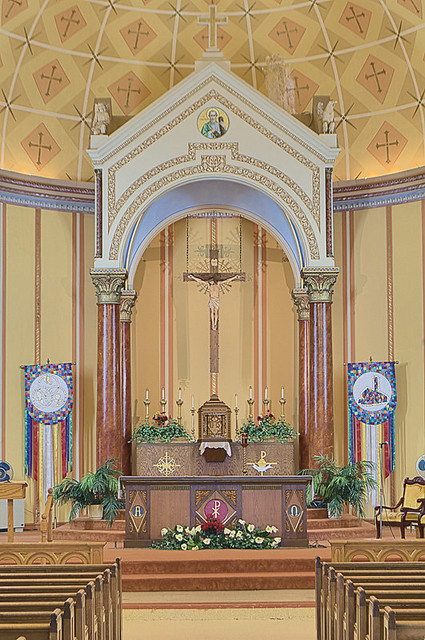
Much of the design of this church is line with the old Liturgical Movement of the early 20th century, including the canopy over the altar, prominent tabernacle, large crucifix, and explicitly Christological symbolism on and around the altar.
The Church is named after Saint Andrew, the first-called Apostle and brother of Peter. Andrew was a fisherman and disciple of John the Baptist. After the Ascension, Andrew preached in Scythia and Asia Minor, and travelled to Volga, Kiev, and Byzantium.
Legend states that Andrew was crucified on an X-shaped cross, and so this is a symbol of his patronage, as is found on the flags of Russia and Scotland. His feast day is November 30th.
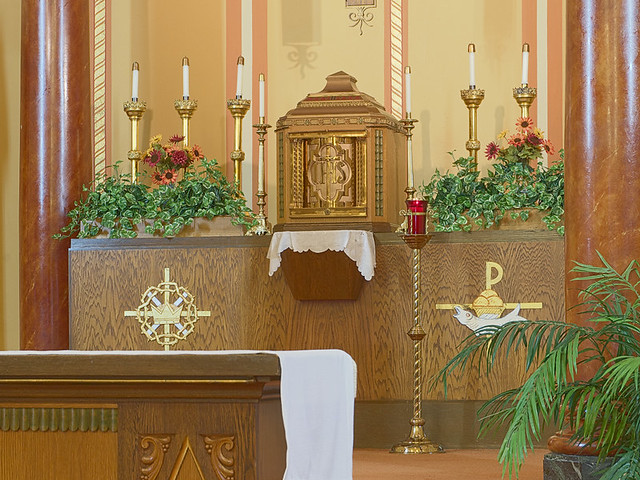
Domine, dilexi decorem domus tuæ, et locum habitationis gloriæ tuæ.
I have loved, O Lord, the beauty of your house; and the place where your glory dwells.
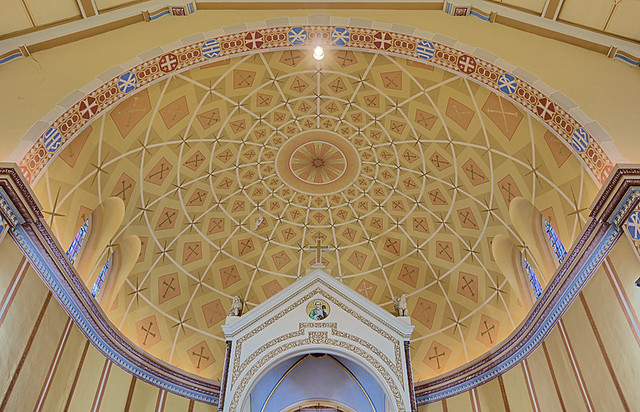
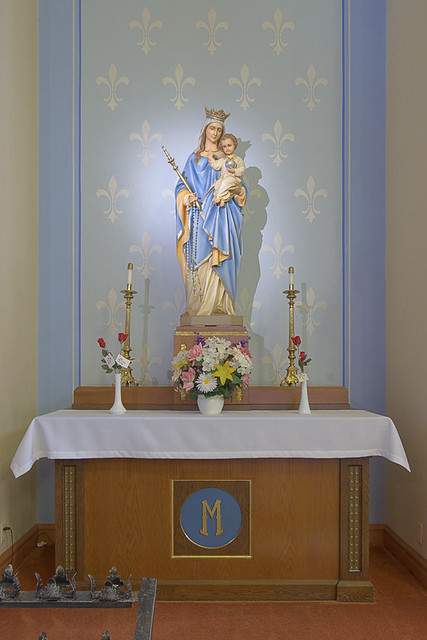
Mary's altar.
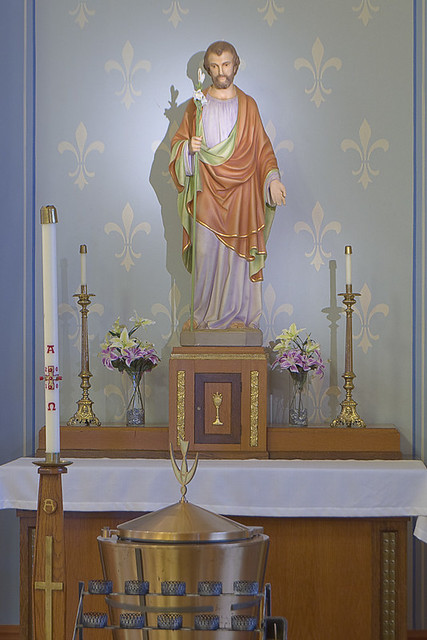
Saint Joseph, and the baptismal font.
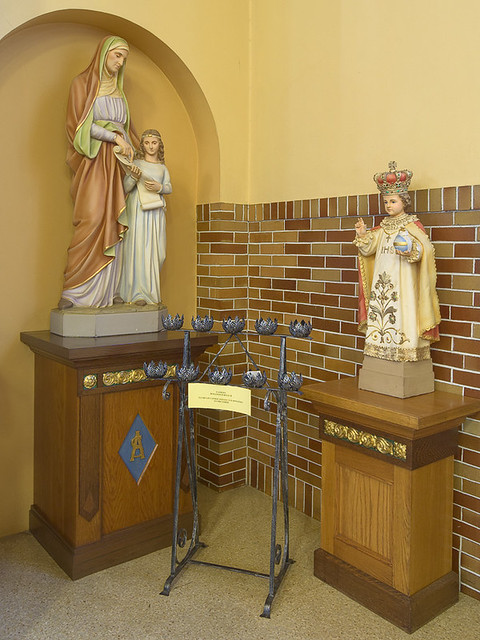
Saint Anne with the child Mary, and the Infant Jesus of Prague.
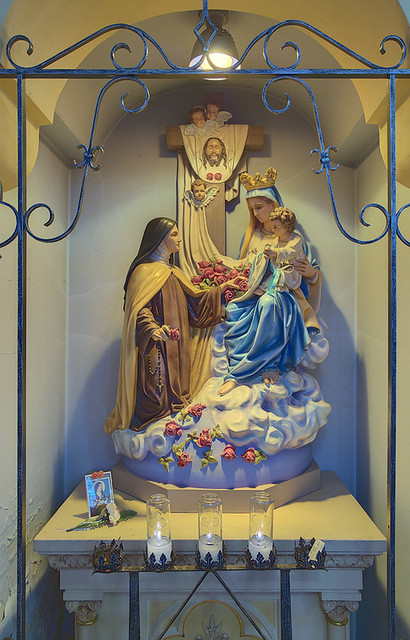
Saint Thérèse of Lisieux showers down roses from Heaven.
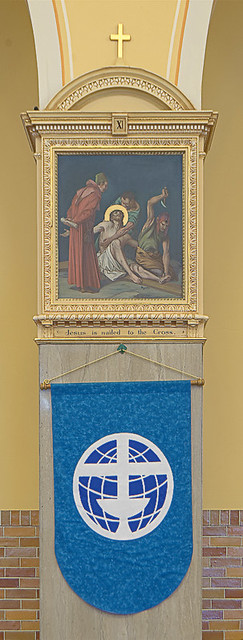
XIth Station: Jesus is nailed to the Cross. O God, who by the passion of thy blessed Son hast made the instrument of shameful death to be unto us the means of life and peace: Grant us so to glory in the Cross of Christ, that we may gladly suffer shame and loss; for the sake of the same thy Son our Lord.
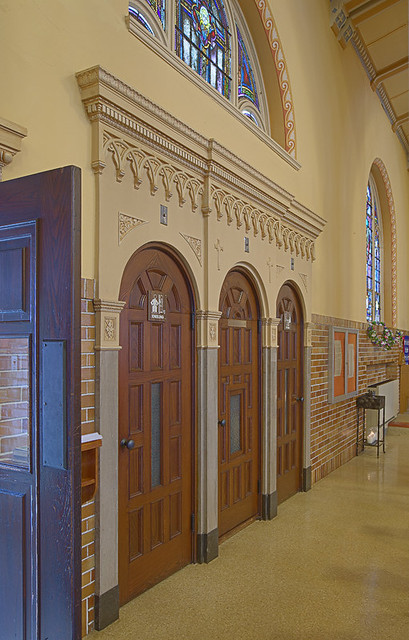
Confessional.
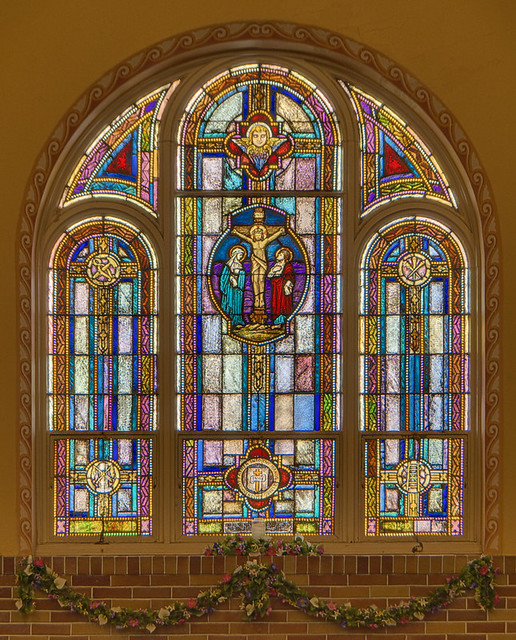
Stained glass window of the Crucifixion. Window details include the Arma Christi, or the arms of Christ, which are the instruments of his Passion, including the hammer and nails.
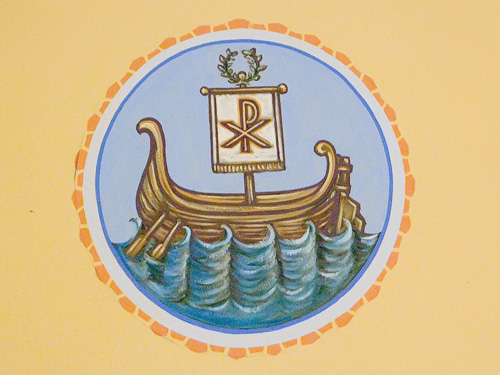
On a painted medallion is the Barque, or Ship of Peter. The Church is like a ship at sea, tossed by storms. Although always seeming to be in danger of capsizing, she remains seaworthy; while those outside of the ship are almost certain to perish.
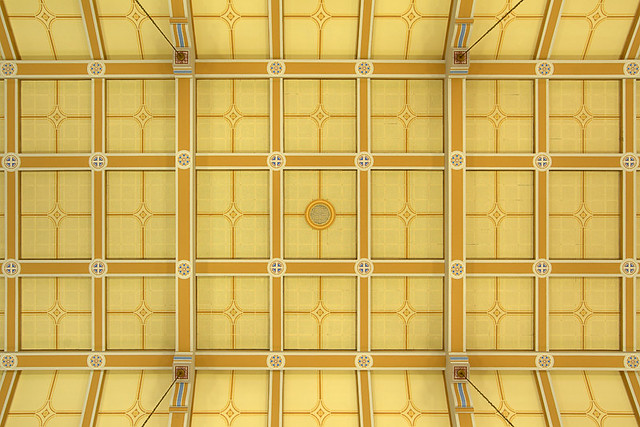
A view of the ceiling.
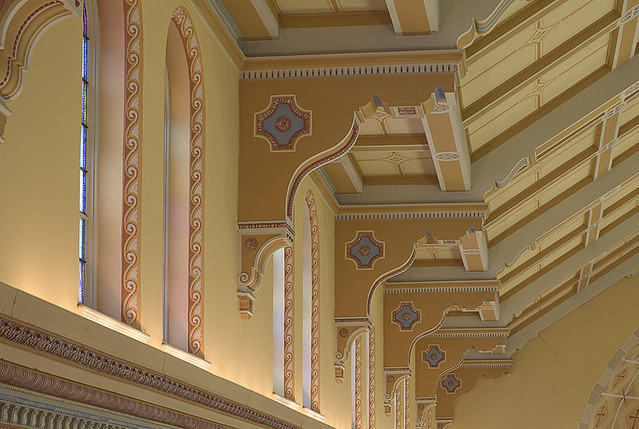
Nicely decorated brackets hold up the ceiling beams.
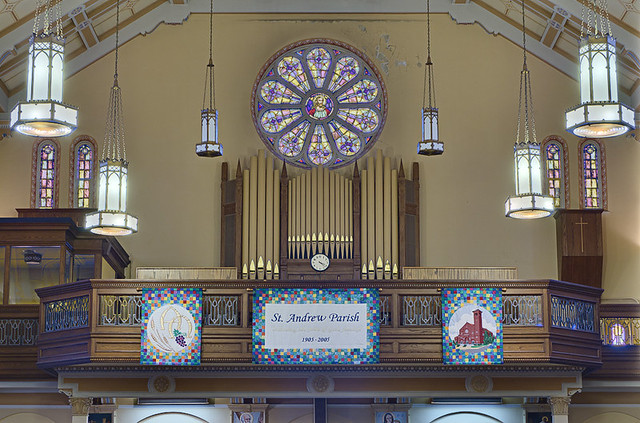
Pipe organ and choir loft.
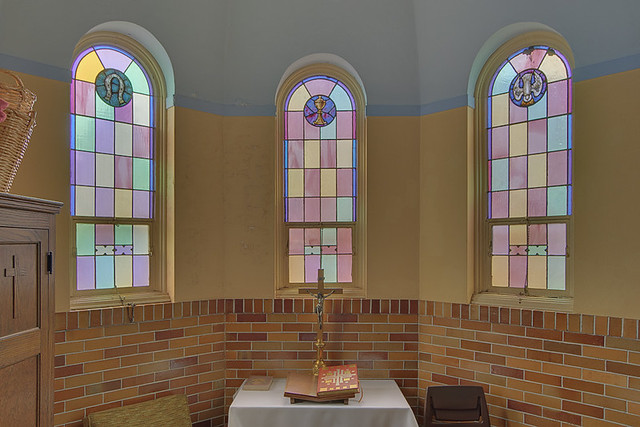
The former baptistery.

Click here for my photos of this church from 2006.
Address:
309 Hoffmeister Avenue
Saint Louis, Missouri 63125


Speaking of the Great Flood, I was in Ste Genevieve this past weekend. My cousin gave us a brief history of the parish there following mass on Saturday evening. Sometime when you have an opportunity perhaps someone there could share the details with you it is quite a story of how the very large church has changed over the years. It is the oldest continuous parish in Missouri.
ReplyDelete